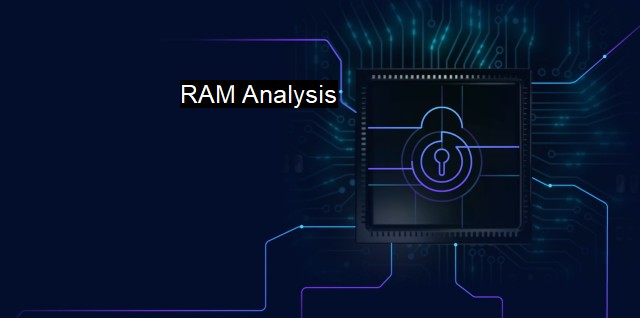What are RAM Analysis?
The Vital Role of RAM Analysis in Cybersecurity and Antivirus Defense: Real-Time Monitoring for Detection and Response to Malicious Threats
RAM analysis in the field of cybersecurity and antivirus essentially covers investigating and monitoring data that resides in a computer system's Random Access Memory (RAM). The principal perspective revolves around identifying malicious activities and intrusions entering via potential vulnerabilities, thereby jeopardizing the integrity, confidentiality, and accessibility of data.From a technical viewpoint, RAM is a notebook type that stores short-term data that a device requires to function. Commonly known as volatile memory, data in RAM is lost once the power is switched off. This transient characteristic makes RAM an attractive space for malware authors to develop and propagate their malicious programs. They prefer this transience so that physical traces of their operations and illicit code fragments are not left behind on the hard drive. conventional antivirus protections usually scan the hard drive for potential threats and allude the RAM space, leading malicious entities to utilize this arena for attacking systems.
Central to RAM analysis in cybersecurity is the application of memory forensics or memory analysis strategies. It involves collecting memory dumps from the infected computer and examining them for suspicious activities. The objective is identifying evidence of malicious programs, revealing the entire scope of the threat, uncovering its origin, and discerning how it dodged preventative security protocols. Memory analysis can uncover vicious entities like sophisticated malware, targeted attacks, and insider threats that are concealed in RAM and evade regular detection techniques.
Herein, RAM analysis proves to be critical for real-time detection, containment, and mitigation of such threats. Concurrently, RAM analysis supports updating antivirus software to recognize and resist new versions of detected malicious programs.
Another aspect of RAM analysis in cybersecurity and antivirus is the extraction and examination of 'strings'. Malware often contains visible strings spotting which helps experts study the signature and lay down plans for its detection and removal. Interrupt vectors, processes, memory maps, network data, registry data, and system information can likewise unveil additional valuable evidence to establish an accurate threat picture.
Malware in RAM can reveal info about the attacker's strategies and assist in devising countermeasures. It is a repository of persistently traversing data, which cyber criminals often abuse to hold instructions for malware. Therefore, such analysis is an active field in digital forensics that supports systematic threat identification, response, and recovery.
Within an organization, RAM analysis can be integral in maintaining a secure IT infrastructure by allowing technicians to respond to threats promptly. They monitor system behaviors, observe unusual patterns, and analyze those patterns to comprehend if the anomalies are the products of malware-related activities.
Memory forensics tools have been developed to help facilitate RAM analysis; such tools can capture the contents of the computer's RAM, facilitating further investigation. Examples from this array of tools include Magnet RAM Capture, Volatility, Rekall, and Belkasoft Live RAM Capturer which are used to peer into the computer's memory and discover illicit activities.
RAM analysis provides a robust countermeasure mechanism in the grand battle against digital invasions. It aptly enhances the security dynamics of modern compute environments and is especially beneficial in handling advanced persistent threats, real-time reactions to incidents, and developing cyber intelligence strategies. Its practice sustains digital safety, upholds data privacy, boosts system immunity, and contributes meaningfully towards building an adaptable, resilient cyber ecosystem.

RAM Analysis FAQs
What is RAM analysis in cybersecurity and antivirus?
RAM analysis in cybersecurity and antivirus is the process of examining the contents of a computer's random access memory (RAM) for the purpose of identifying and analyzing malware, suspicious processes, or other security issues. It involves extracting data from the computer's memory and analyzing it for potential threats or malicious activity.Why is RAM analysis important in cybersecurity and antivirus?
RAM analysis is important in cybersecurity and antivirus because malware and other threats can be difficult to detect using traditional antivirus software, and may remain hidden on a system even after a thorough scan. By analyzing the contents of a computer's RAM, experts can often identify and remove these threats more effectively.How is RAM analysis performed in cybersecurity and antivirus?
RAM analysis is typically performed using specialized software or tools that allow experts to capture and analyze the contents of a computer's memory. These tools may use a variety of techniques to extract data from RAM, such as kernel-level hooks, virtual machine introspection, or direct physical memory access. Once the data is extracted, it can be analyzed for signs of malware, unusual processes, or other security issues.What are some common uses of RAM analysis in cybersecurity and antivirus?
Some common uses of RAM analysis in cybersecurity and antivirus include identifying and removing malware, analyzing network traffic patterns, detecting and blocking suspicious processes, monitoring user activity, and identifying system vulnerabilities. It can also be used in forensic investigations to gather evidence and reconstruct the events leading up to a security incident or breach.| | A | | | B | | | C | | | D | | | E | | | F | | | G | | | H | | | I | | | J | | | K | | | L | | | M | |
| | N | | | O | | | P | | | Q | | | R | | | S | | | T | | | U | | | V | | | W | | | X | | | Y | | | Z | |
| | 1 | | | 2 | | | 3 | | | 4 | | | 7 | | | 8 | | |||||||